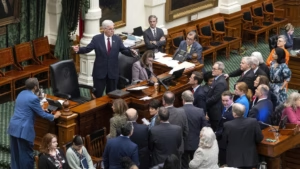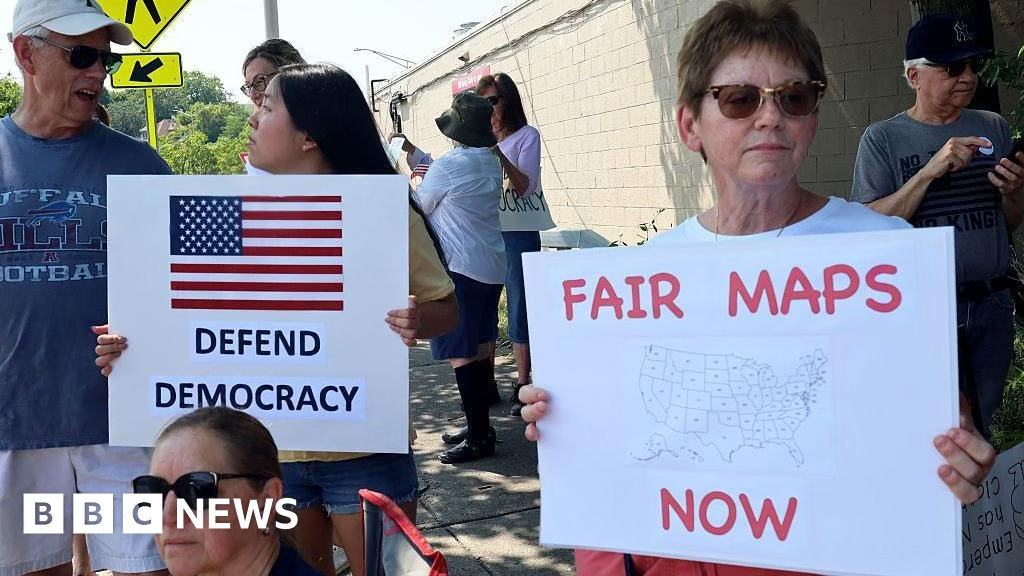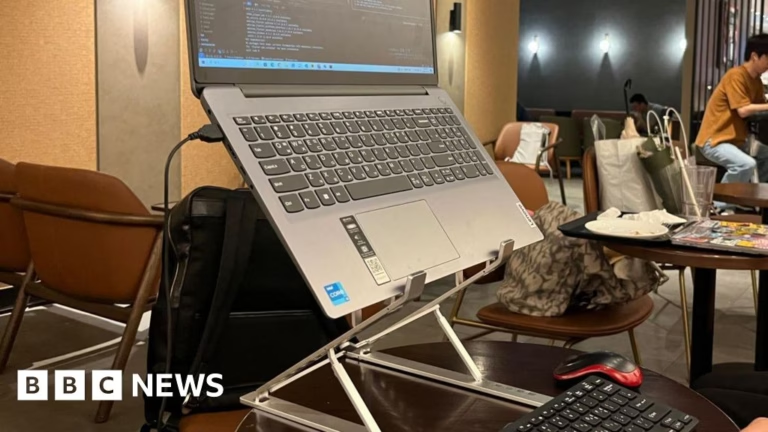<
div id=””>
/live(951fb8a0-7ee5-11f0-9c29-fd1475d64d3e).webp)
Getty Images
Lawmakers in California and Texas – the two most populous US states that together contain more than 70 million Americans – are at the centre of an intense political battle that is poised to have a major impact on the balance of power in Washington DC.
After Texas passed a redistricting measure that would create five more congressional seats favouring Republicans, California lawmakers hit back on Thursday by voting to re-draw the state’s maps – carefully made to cancel out Texas’ move. The California maps will go before voters in November.
This political arms race for power may seem both bizarre and confusing – but it is one that could spread to other states in advance of next year’s national midterm elections.
Here’s what you should know about America’s fight over congressional redistricting.
The battle began in Texas this summer, when the Republican-majority legislature took the unusual step of re-drawing congressional seats in the middle of the decade – in a deliberate effort to send more Republicans to the House of Representatives in Washington.
The Lone Star State’s goal was to add five additional congressional seats, which would favour Republicans. California responded by re-drawing its own districts to boost Democratic representation by five seats, in an attempt to cancel out the move by Texas.
What is redistricting?
The US House of Representatives is made up of 435 legislators who are elected every two years.
They represent districts with boundaries determined in processes set by their state governments. Some states have non-partisan independent commissions which determine districts, while others leave it up to the state legislature.
Who draws the lines and how can go a long way in shaping the ideological tilt of the district and the likelihood that it elects a Democrat or a Republican.
At the moment, the House rests on a knife’s edge, with Democrats only needing to seize three more seats to flip the chamber in their balance.
The president’s party historically loses seats in the midterm election after their victory.
If Democrats seize the House, they can launch sweeping investigations of presidential actions, as Democrats did in the second half of Donald Trump’s first term and Republicans did in Joe Biden’s final two years.
/(live)(9c5a2790-7ee5-11f0-83cc-c5da98c419b8).webp 240w,https://ichef.bbci.co.uk/news(320)/cpsprodpb(30e0)(live)(951fb8a0-7ee5-11f0-9c29-fd1475d64d3e).webp 320w,https://ichef.bbci.co.uk/news(480)/cpsprodpb(30e0)(live)(9c5a2790-7ee5-11f0-83cc-c5da98c419b8).webp 480w,https://ichef.bbci.co.uk/news(640)/cpsprodpb(30e0)(live)(9c5a2790-7ee5-11f0-83cc-c5da98c419b8).webp 640w,https://ichef.bbci.co.uk/news(800)/cpsprodpb(30e0)(live)(9c5a2790-7ee5-11f0-83cc-c5da98c419b8).webp 800w,https://ichef.bbci.co.uk/news(1024)/cpsprodpb(30e0)(live)(9c5a2790-7ee5-11f0-83cc-c5da98c419b8).webp 1024w,https://ichef.bbci.co.uk/news(1536)/cpsprodpb(30e0)(live)(9c5a2790-7ee5-11f0-83cc-c5da98c419b8).webp 1536w)
Getty Images
Why is everyone talking about redistricting now?
Each member of the US House represents a district in their home state. The districts are typically set after after the US Census is conducted every decade to account for the states’ population changes.
But Republicans and Democrats are now fighting to redraw the maps mid-decade, either to help or block Trump’s agenda. By changing the make-ups of the districts, each party hopes to capture more seats in the House.
Trump has called on Republican-controlled statehouses across the country to re-draw their districts to try to prevent his party from losing control of the House in the November midterm elections.
But the effort in Texas hit a roadblock in early August after the state’s Democrats fled the state in a bid to deny the quorum needed to pass the Republican redistricting measure.
They returned after two weeks, when the governor ordered them to be arrested. After they returned, the chamber voted 88-52 to create five new seats.
The measure was swiftly endorsed by the Senate and is now expected to receive Governor Greg Abbott’s signature before becoming law.
How does redistricting work and is it legal?
Gerrymandering – the redrawing of electoral boundaries to favour a political party – is practised by both main parties and is legal unless ruled to be racially motivated.
However, it is extremely unusual for the president to publicly back a state’s effort to create partisan advantage, as Trump has done with Texas. And while both Democratic and Republican-dominated states have faced criticism and court battles over their US House maps, rarely do lawmakers so explicitly acknowledge the partisan intention behind their actions as Texas and California lawmakers have done this month.
Democrats and civil rights groups have said Texas’ new maps will dilute voting power from minorities, which would violate federal Voting Rights Act, and have threatened to sue.
Critics argue that the process allows politicians to pick their voters, rather than voters picking their elected official.
The process leads to some very wonky-shaped maps, in which certain groups are lumped together regardless of their geographic proximity.
In 2019, the Supreme Court took away the power of the courts to block political gerrymandering.
“Federal judges have no license to reallocate political power between the two major political parties,” Chief Justice John Roberts wrote in his ruling at the time.
California vs Texas
Redistricting could have significant implications in the 2026 midterms. Having more districts across the US that favour a political party could tip the balance of power in the US House of Representatives – and both Republicans and Democrats now want to win that advantage for themselves.
Illinois, New York, New Jersey, New Hampshire and Maryland are among the Democratic-led states prepared to launch countermeasures to the Texas plan.
Indiana, Florida, Missouri and Ohio are also now looking into redistricting in order to boost Republican representation in Washington.
California Governor Gavin Newsom, whose state is leading the Democratic charge, has pledged to “fight fire with fire” by replicating Texas’ actions.
But the process in California is slow, due to a 2008 law designed to make the process less partisan.
On 21 August, the California statehouse voted to have the new maps
Source: https://www.bbc.com/news/articles/cdxydpr1zz2o?at_medium=RSS&at_campaign=rss





(2.27.1-1)grey-placeholder.png)



